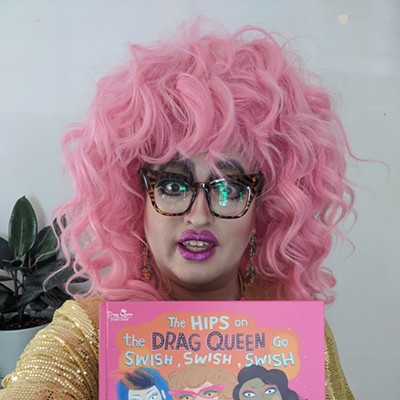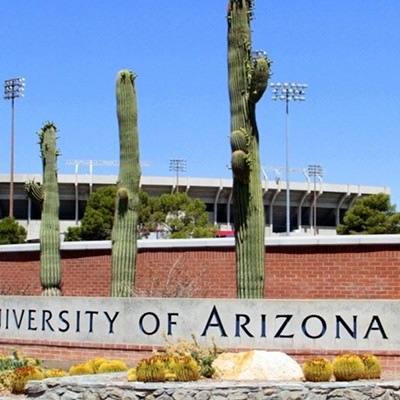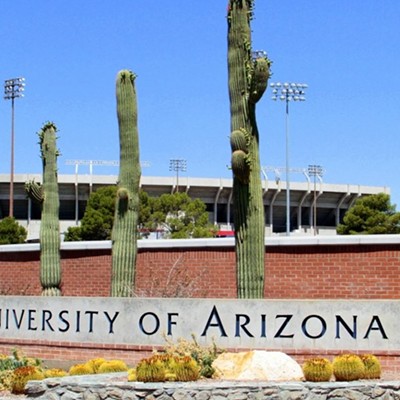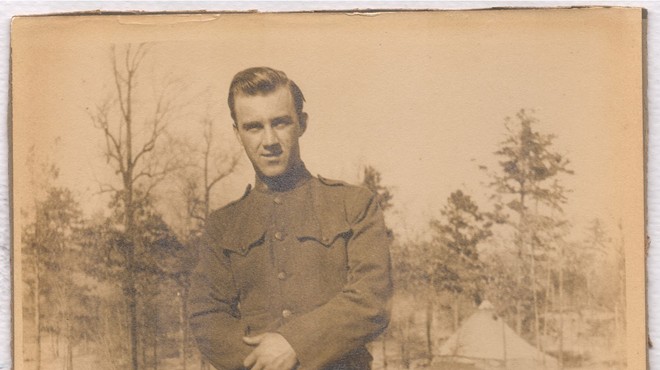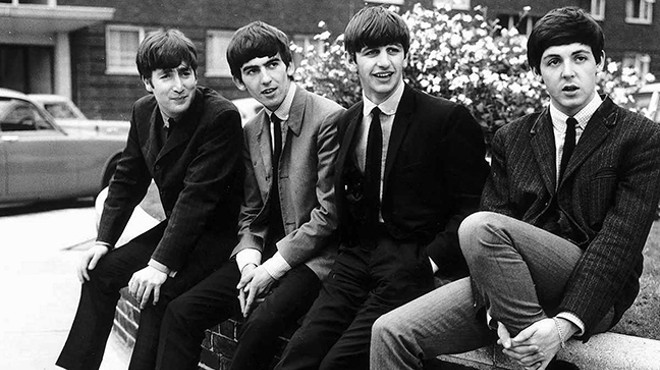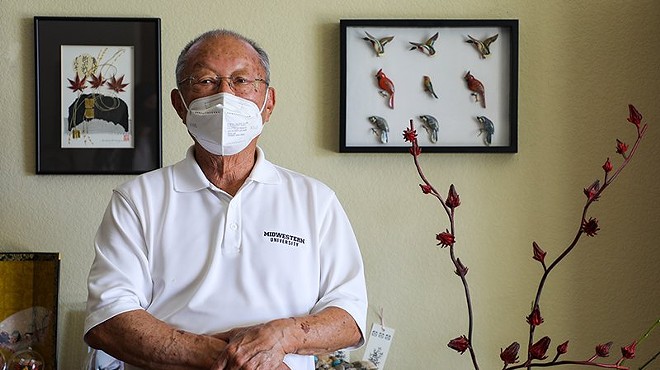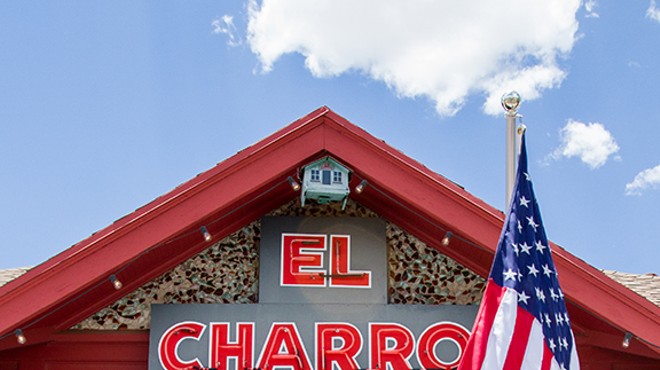Wednesday, February 26, 2014
Remembering William F. “Bill” Greer

- Photo courtesy of Greer family.
- William F. “Bill” Greer
Beloved former University of Arizona journalism professor and Associated Press editor, William F. “Bill” Greer, died in San Diego on Saturday, Feb. 8, 2014 at the age of 68.
A staunch believer in social justice, Greer, who joined the UA Department of Journalism in 1980, recruited and mentored students from diverse backgrounds. Greer taught several courses at the university, including photojournalism, and was the advisor for The Tombstone Epitaph, the historic newspaper of Tombstone, Ariz. produced by UA students since 1975.
Former students Greer noted that, although he could be gruff at times, Greer could see the potential in each and every student whose life he touched.
“He liked to be your friend,” said C.T. Revere, a Greer protégé who now works as a senior community relations officer for the Arizona Department of Transportation. “He taught you life lessons, but he would be mean as hell if you got off track.”
According to Revere, Greer got to know his family: his parents, his sisters, his brother. “He became a positive influence in their lives too,” said Revere.
Many student staffers of the Epitaph bonded with Greer in the production room.
“He used to piss us off all the time,” said Alfredo Eduardo Araiza, now a professional photojournalist with the Arizona Daily Star. “He would change our copy. Then he’d leave, and we’d change it back…. He didn’t give anything away. If you were good, he wanted to make you better.”
Greer moved heaven and earth to help his students. On one occasion, Greer arranged transportation to a job fair held in Los Angeles by the California Chicano News Media Association.
“Thanks to him and that job fair, I got my first internship at the Hartford Courant where I eventually worked for 25 wonderful years,” said Greg Morago, one of Greer’s first students in the early 1980s. Morago is now a food editor for the Houston Chronicle.
At a recent celebration of Greer’s life held at The Shanty in Tucson, Ariz., friends and colleagues shared stories and recollections about Greer’s life.
Childhood friend, Allan Teasley, attended Alice Vale Junior High School with Greer. Alice Vale “junior jail” they used to call it. The first recollection that came to Teasley’s mind related to Greer’s integrity.
“When he said he’d do something, he’d do it,” Teasley said.
According to Teasley, Greer was a diligent young man who worked an outside job throughout high school, saving his paper route money to buy a motorcycle.
All work and no play makes for a dull life, but as Greer matured, he didn’t have that problem.
“He wasn’t too wild in high school,” said longtime friend Judy Teasley, “He developed that later.”
Greer and Frank Sotomayor studied journalism together at the UA in the mid 1960s when Sotomayor was editor in chief of the Arizona Daily Wildcat and Greer was the photography editor. Sotomayor recalled Greer’s unorthodox solution for excess white space in Wildcat editorial columns, filling the space with photographs.
Greer could be happy-go-lucky, but he took his responsibilities seriously. One of his AP posts was located in San Francisco. Eventually Greer asked for an assignment in Texas because he was having too much fun in San Francisco. It was time to get serious again.
As a university professor, Greer was well known for his down-to-earth attitude.
On one occasion, Greer needed clothing for a black tie function. He didn’t have a dark suit, but did have a cap and gown that he would lend to students in need. After researching the question, Greer concluded that a cap and gown was always appropriate at a black tie function, so that’s what he wore, much to the delight of his colleagues, recalled George Ridge, a former department head of what is now the UA School of Journalism.
A key to Greer’s concern for students might be an experience he had as a young reporter for the UA student newspaper, the Arizona Daily Wildcat. In the spring of 1966, Greer covered a fellow student’s drowning death in Puerto Penasco, Mexico, still a popular spring break destination for UA students.
“All Seems Lost, But Hope Pervades” was the headline of a March 25, 1966 Wildcat story, one of a series Greer wrote about the tragedy that cut short the life of a promising student.
“Maybe he’ll be just around the next corner,” Greer wrote of the missing student, “Unhappiness is to watch a father trudge along the beach looking for his son.” The young man’s body was found a few days later, about 20 feet from the shore.
Greer “knew his student’s personal stories, not just their performance as students,” said Jacqueline Sharkey, a retired professor of journalism and the founding director of the UA School of Journalism. No matter what a student’s abilities might be, Greer inspired that student to achieve his or her personal best, she said.
“Everyone wanted to be with him,” said John de Dios, a Greer student from 2003 to 2005 said. “He was like our Dumbledore [the head of Harry Potter’s school Hogwarts.]” Greer’s nickname among many of his students was “Big Daddy.”
“He loved to have fun, I don’t think I heard him complain about anything the entire time I knew him,” said de Dios, who was an assistant for Greer and a very close friend. “He always loved his martinis and his cigars.”
Greer also loved the things that can’t be bought with money.
“He cared about the little things in life, and taught me unconditional love,” said Tawny Darling, 36, the younger of Greer’s two daughters. “For that I will always be grateful.”
According to Darling, Greer built a watering hole for desert animals in the front yard of the family home so the Greer children could watch the rabbits and birds.
Greer loved to dance and would pack his dancing shoes whenever he went on a trip. He made a cameo appearance at his recent 50th high school reunion where some of his old friends “danced” with the, by then, wheelchair-bound Greer.
“We had no idea that this would be the last time we would see him,” said Judy Teasley.
One of Greer’s crowning achievements, and a lasting legacy, was his work as chair of the UA Journalism School’s diversity initiative, which included being the director of the annual Journalism Diversity Workshop for Arizona High School Students.
After Greer retired in 2008, the diversity workshop, founded in 1981, continued. Even after Greer’s retirement he would still occasionally appear at workshop mixers to meet and encourage the new students.
It’s hard to believe that he won’t be just around the next corner full of life, laughing and wearing one of his famous guayabera shirts, Revere said.
Greer, who graduated from the University of Arizona with a bachelor’s degree in journalism, worked for the AP for 12 years in Tucson, Phoenix, Denver, San Francisco, Dallas and Chicago.
He was preceded in death by his ex-wife Norma Greer.
Greer is survived by his two daughters, Brooke Greer and Tawny Darling, and Darling’s two children, Nathan, 2, and Julia, 4 months.
Some of his ashes were spread on the beach in San Diego, a small ceremony with his daughter Brooke and some close friends in attendance on Feb. 22, 2014.
A celebration of life hosted by Greer’s two daughters will be held in Tucson, Ariz., on March 29, 2014. More details will be coming.
Tags: William F. “Bill” Greer , Bill Greer , Professor Greer , Arizona Daily Star , University of Arizona


